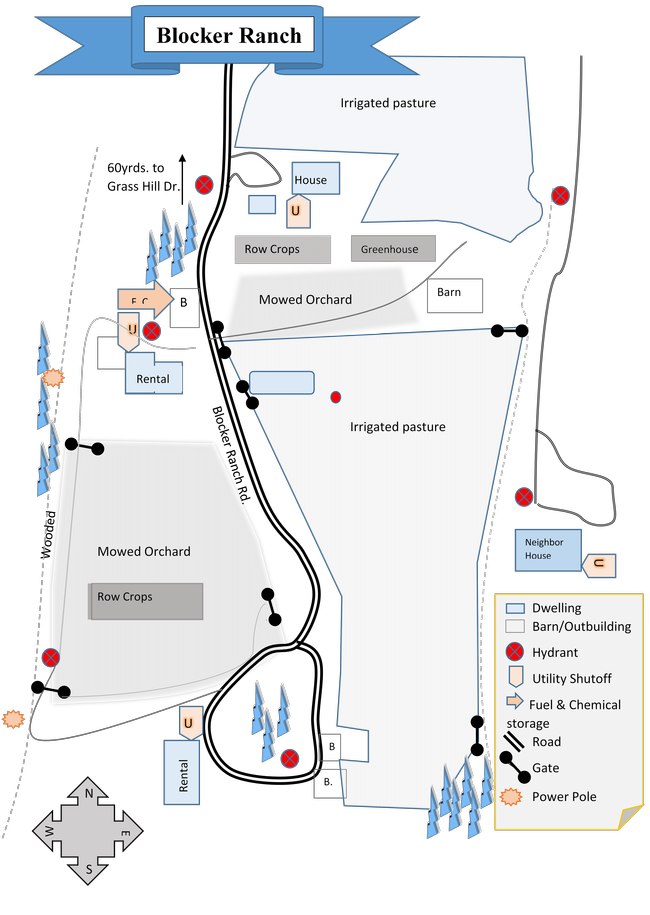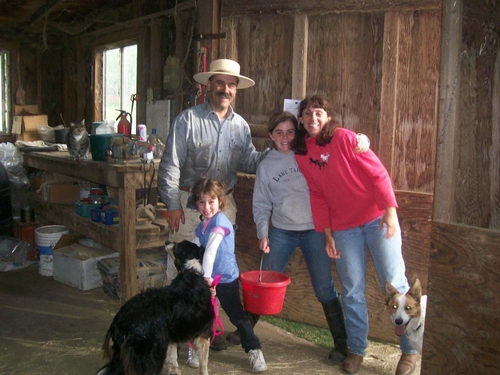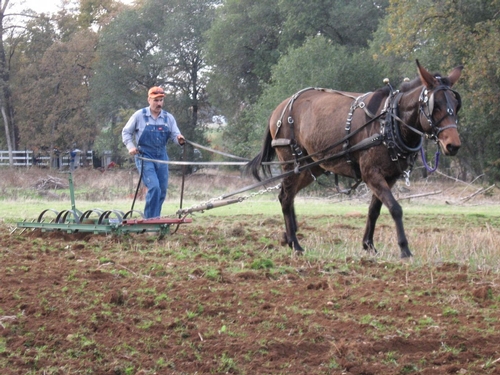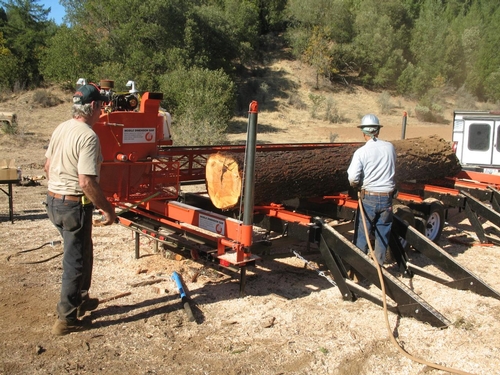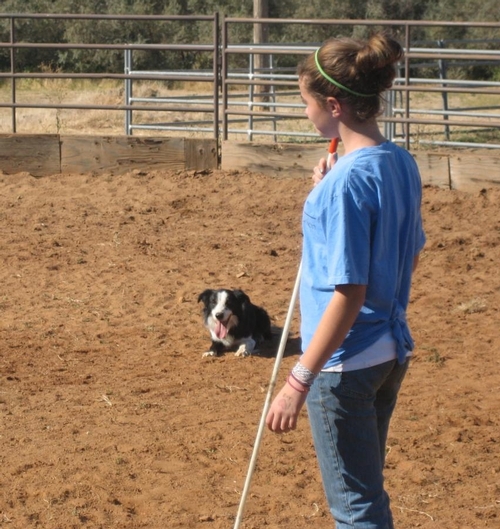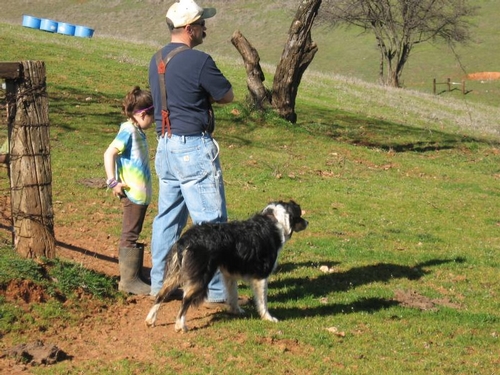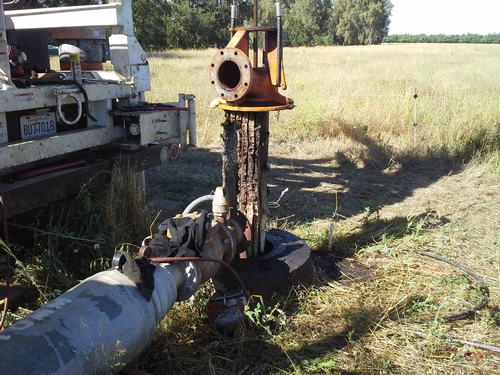Posts Tagged: farm business planning
Farm Preparation for Wildfire and Other Emergencies
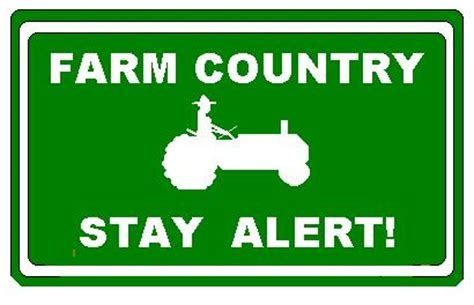
According to many state fire officials, we no longer have simply a ‘Fire Season' but a ‘Fire Year'. In winter drought conditions, some parts of our region do not receive enough rain to mitigate fire danger. It is more important than ever to constantly assess your farm for fire safety and be prepared for any emergency.
The following information will assist you in thinking through four important areas of disaster preparedness for your farm: Paperwork & Plans, Farm Map & Layout, Tools & Machinery, and Operations & Training.
Paperwork & Plans:
- Conduct a fire risk assessment and record your findings. Assess brush clearance, road access, evacuation routes, defensible space, topography (fire climbs hills quickly), and water sources. If needed, make a plan to address any critical issues.
- Evaluate current insurance coverage to ensure adequate coverage for farm assets. Consider livestock, crops, buildings, and equipment.
- Keep up-to-date production, marketing, and financial records. Check the Foothill Farming website resources on risk management and business planning tools for templates. Scan or store them on a USB flash drive or external hard drive.
- Make a farm communication plan. What happens if you are not home during a disaster situation? Do you have phone numbers and good relationships with neighbors? Are the phone numbers written down for your family members and employees as well?
- Create a farm emergency plan, use the following free online templates or use them as a guide to create one more suitable for your own farm.
- http://ucanr.edu/sites/placernevadasmallfarms/files/289237.pdf
- https://www.formsbank.com/template/325465/emergency-plan-for-farm-template.html?page=5
- http://www.maeap.org/uploads/files/EMERGENCY_PLANNING_fillable_Form_E2575-ET_AA.pdf
- http://www.ncagr.gov/disaster/Farm-Emergency-Plan-Template.pdf
Developing a farm emergency plan before a disaster can help you respond more rapidly and objectively.
Farm Map & Layout:
- A farm map should be part of your emergency plan. Create a map including symbols and a key for the following:
- Homes, barns, and outbuildings.
- Utility shutoffs.
- Power and utility lines.
- Fuel and chemical storage.
- Roads and bridges (including weight limitations).
- Water sources and delivery systems.
- Gates (including combinations).
- Fuel breaks.
- Any other possible farm hazards.
You may include brief general guidance for emergency responders on the map as well.
- A well-maintained and accessible water source is critical. If possible, consider a water source for fire trucks. An accessible source includes:
- Defensible space.
- Gravel road access within 12 feet of water source.
- Minimum 45-foot radius turnaround close by.
- Post permanent signs indicating water source location.
- For more detailed information about what is needed at a water source, check out this information from Oregon State Extension https://catalog.extension.oregonstate.edu/sites/catalog/files/project/supplemental/pnw618/pnw618-chapter6.pdf
- Farm design should incorporate these principles, especially around structures. Create at least 100 feet of defensible space by:
- Removing flammable objects from around barns or dwellings (e.g. flammable vegetation, feed bags, cardboard boxes, plant debris, fuel, etc.).
- Breaking up fuel continuity by separating plants from each other in gardens and landscape design.
- Taking care in selecting, locating, and maintaining trees.
- Post a clearly visible sign with property name and number at the entrance.
Tools & Machinery:
- Carry fire extinguishers and fire tools, especially in off-road vehicles. (e.g. trucks and tractors), CalFire requires a 5-gallon water supply and a fire tool be carried in wildland settings – consider adding this equipment to your tool box!
- Conduct frequent inspections of farm machinery for debris removal. Pay attention to hazards associated with exhaust systems and catalytic converters.
- All farms should have proper personal firefighting equipment such as shovels, hoes, and fire extinguishers that all farm employees can carry.
- Use rodent deterrents as they can chew through electrical insulation.
- Limit or postpone machinery use on high fire danger days. If use is unavoidable, plan for competing tasks before 10:00 AM.
- Stay 30 minutes after machinery use is shut off to monitor fire risk.
- More tips on preventing farm equipment fires, http://www.redrivermutual.com/wp/wp-content/uploads/Preventing-Farm-Equipment-Fires4.pdf
Operations & Training:
- Conduct an annual fire plan and equipment “refresher” for all farm personnel. Consider labeling safety equipment and fire tools on your map, with signs for your employees and family. Train folks on how to use this equipment.
- Have a routine for “red flag days” such as delaying mowing or machinery use.
- Although California law requires all electric fences to have low-impedance chargers, check frequently to ensure wires are free of materials that may cause the fence to arc. Always operate according to manufacturer directions.
- Restrict or clearly designate smoking areas.
- Include fire danger mitigation and forest management in annual planning.
Fire prevention should be a year-round activity in our fire-prone region. Be sure to consider the needs of both family and farm personnel in any emergency situation. Proper planning now will help mitigate the inevitable stress involved in farm emergencies. We would love to hear your thoughts, plans, and ideas related to disaster preparedness. Please feel free to comment below.
Farm and Ranch Rules and Regulations
I like to be organized, so when we started our small farm in 2010 it didn't feel quite right not to have a checklist of requirements to become a legitimate operation. Did we need a business license, our scale certified, or a food safety inspection? Often, we found we needed a piece of paperwork by chance while looking for outlets for our produce, flowers, or nursery starts. You need a Producer's Certificate to sell at the farmers market we wanted to attend, you now need to follow the “California Small Farm Food Safety Guidelines” to get a Producer's Certificate (as of January 1, 2015 you check a box on the form saying you do), and you must have liability insurance. That adds up to three checks off the list from following through with selling at a Certified Farmers' Market. Two more checks for our farm since we choose to be organic: register organic with the state, and certify organic with a third party agency.
Many farmers have followed the path to paperwork like we have; necessary leads, asking mentors, and researching the vast sea of information on-line. We also follow relevant social media and attend UC Extension events and hear about issues to be aware of. Currently we are waiting to see how the Food Safety Modernization Act (FSMA) will impact our small farm.
In the past five years, there are more rules, and more licenses to acquire, so hopefully this checklist will boost your confidence that you are up to date. Please keep in mind that by the time I finish this blog posting there could be another one to add, so always check for the most current information.
OSA 99C Farm and Ranch Rules and Regulations Checklist
Small Farm Evolution in Five Easy Steps
Like any small business, small farms undergo a series of transformations during the course of their lives - from youthful exuberance to middle-age crisis to confident maturity (hopefully). Looking at the history of my own farming endeavors, I see that we've traversed at least four evolutionary stages – and we're hopefully headed for a fifth!
The Romance Phase
In the mid-1990s, we raised a handful of cows and feeder lambs. I read many of the key books in the small farm movement (from authors like Joel Salatin, Elliot Coleman and Gene Logsdon). We sold calves when we weaned them in the springtime, and we raised enough feeder lambs for friends and family that we could put a lamb (or two) in our freezer each fall at no cost to us. I served on the board of a relatively new local food organization (PlacerGROWN), and we started raising laying hens and growing vegetables. With a growing family and a dream of creating our own small farm, we purchased 3 acres with 2 barns and a home in Auburn. In the autumn of 2002, I took our first crop (pumpkins and popcorn) to the Auburn Farmers' Market. We also purchased 10 meat goats and more feeder lambs to manage the blackberries and weeds in our pasture. We were on our way!
Looking back, I realize that I didn't know enough to realize that the books I was reading were long on production systems and short on business reality. In many ways, I drank the cool-aid, as my friend and fellow farmer Jim Muck says. Micro farms, like the one I'd just started, were going to save the world from industrial food production. I had no concept about the importance of scale to the future viability of my business.
Experimentation
I'm not sure there's a clear delineation for most small farms between the romance and experimentation phases. For Flying Mule Farm, part of the romance and excitement about starting our farm was the opportunity to experiment with new crops and new livestock. Part of our experimentation was driven by the mistaken belief that we needed to grow everything our customers wanted to buy (and everything we wanted to eat). Specialization and focus was the downfall of industrial agriculture, in my perspective. Diversity was the key – every successful small farm needed multiple crops and several species of livestock. During this phase, we grew spring, summer and fall vegetables (at the peak of our vegetable experiment, we grew on about a quarter acre at home and on another acre of rented land nearby). We started experimenting with greater numbers of sheep, buying 12 Barbados lambs to graze on brush on a friend's timberland. We added meat birds to our chicken flock (our oldest daughter, Lara, reminds us that we butchered chickens – with her help! – on her first day of kindergarten). We sold most of our own brush goats but eventually bought breeding ewes. We leased (and lost – and regained) pasture land in Grass Valley, Lincoln and Auburn during this stage. We tried cutting firewood and milling lumber commercially. And we experimented with the use of draft animals as an alternative to tractors.
In many ways, I loved the experimental phase of our business – especially the outdoor work and our time at the farmers' market. Since we were only at the market seasonally, I still had some Saturdays off. And since our oldest child wasn't yet playing sports on Saturdays, I wasn't conflicted about missing family activities - more on this later!
Wow – this is costing us a fortune! Maybe we need to treat it as a business!
As our knowledge and skill levels improved, we began to see that we needed to treat our farm as a business. We couldn't simply keep growing and raising things without understanding what each crop or type of livestock meant to our economic and financial well-being. The books I'd read didn't seem to emphasize this aspect of farming. And in the back of my head, I began to realize that there were biological limits to the amount of income an acre of vegetables or 100 acres of unirrigated pasture would produce. I started to suspect that we needed to get bigger.
During this stage in our evolution, I participated in the first Farm Business Planning Short Course offered by our local extension office (I've since helped teach this class – now in its eighth year). While I examined all of our enterprises (looking at my economic analysis spreadsheets from that time, I see that we had vegetable, sheep, custom grazing, goats, firewood and other forest products, laying hens and meat chickens). While I was still working part-time, I started thinking seriously about the hourly return to my labor from each of these enterprises. I realized I didn't care for raising meat chickens in large numbers (we raised 500 birds one summer). I also realized that a quarter acre of mixed vegetables (as many as 20 different “crops”) was a large garden rather than an economically viable farm. And I realized that I most enjoyed working with sheep. With this new sense of focus, I decided to quit my “day” job and try to raise sheep as a full time occupation. In addition to leasing pasture around Auburn, we expanded our targeted grazing service (where we'd provide vegetation management services for other landowners). At our peak, we attended 4-5 farmers markets each week – selling grassfed lamb, goat and beef, as well as wool products and firewood on occasion.
As my daughters grew older and wanted to play sports (as I had as a kid), I found it more and more difficult to be at the farmers market on Saturday mornings. On the other hand, we often worked together as a family, which brought tremendous nonfinancial rewards. And we ate well – we traded meat for fruits and vegetables at farmers markets, produced eggs from our own laying hens, raised our own meat birds. But the economics were challenging to say the least.
Why am I still farming? Can I continue?
For me, these questions define the evolutionary stage in which I find Flying Mule Farm today. Several years ago, we came to the conclusion that the farm was taking full-time work on my part, but was paying less than a part-time wage. We exhausted our ability to expand (which had mostly to do with lack of capital and lack of land). I went back to work, and we downsized our sheep operation to fit the time I had available. We started selling whole and half lambs rather than individual cuts – and eventually phased out of the farmers market altogether. I gradually noticed that my motivation for farming was derived not from a desire to feed my community but from my love for working outdoors with livestock. My skills and knowledge base improved to the point where I was confident I could manage the 600-800 ewes necessary to make the ranch a full-time job at full-time pay – but my bank account didn't keep pace. And so today I find myself at a critical juncture – can (and should) I continue farming? I'm struggling with how to answer this question.
Economic Viability = Sustainability
A sustainable farm must be environmentally, socially and economically sustainable. As Flying Mule Farm has evolved, I've begun to think that economic sustainability is the key to the other two elements – a farm that can't stay in business can't provide environmental or social benefits. Based on my experience over the last 20 years, I think that economic viability depends on focused production, appropriate scale, and efficient marketing. I'm still working to get there – on a part-time basis at the moment.
Our farm has been in the midst of its mid-life crisis for several years. I still appreciate the numerous non-monetary rewards of farming – from the gift of new life during lambing season to the opportunity to work side-by-side with my wife and girls. I love the work like nothing else I've ever done. As we enter this new phase in the evolution of Flying Mule Farm, I'll be aiming towards greater profitability. While profit is not the purpose of our farm, it is, after all, necessary for its continued existence. Stay tuned….
Note: Paul Mueller one of the founders and owners of Full Belly Farm, will be joining us for our Farmer-to-Farmer Breakfast on December 3! He'll be talking about how Full Belly Farm has evolved - I can't wait to hear what he has to say! Click here for more information!
Farming, the Original Risky Business
As we prepare to host another Beginning Farming Academy here at UCCE, we’ve been talking a lot about risk management. An economic concept, risk management is defined as the effect of uncertainty on objectives. In farming terms, I think of risk management this way: What are the vulnerable parts of my farm operation and what are my back-up plans in case of unforeseen events?
The risks of your farm enterprise will fall into five main categories:
Production – Example: A late frost knocks out your entire tomato planting.
Financial – You have to make payroll and your cash flow is not up to snuff.
Marketing – Your biggest account decides to buy from another producer.
Human - Your delivery driver doesn’t show up.
Legal – An employee files a Workers’ Compensation claim.
While you may never have to deal with these unforeseen situations, taking the time now (while the weather is clear and the bank account strong) to think through your risks and devise management plans, will save you time, money and heart ache.
Here are a few tips I’ve received along the way to insure my operation against the inherent risks of farming:
- Have access (aka pre-approval) to a line of credit (a credit card or loan) for as much money as your largest potential expense. Examples include replacing an irrigation pump, purchasing feed for livestock, making payroll, or replacing/repairing a delivery vehicle. Don’t use the credit unless it is an emergency. It reflects well on your business to have access to credit that you do not use. If you do use this emergency line of credit, have a repayment plan devised in advance. Recognize the red flag of using this borrowed money- What went wrong with the cashflow and how can it be fixed?
- Don’t short yourself on insurance. Yes, I know – it seems like just another, excessive administrative cost, but it is a critical part in protecting your farm equity, maintaining landowner relations (and therefor land tenure) and protecting the assets of your entire family. Ask around to see who is insuring other farmers in your area and then compare quotes from different providers. Remember, your insurance needs to cover the assets of anyone remotely associated with the farm business including family members (most notably your parents) and landowners. It is worth paying the premium for adequate insurance than facing the calamitous situation of not having enough coverage for a claim filed against you.
- Buy health insurance and require that all farm employees have health insurance. With recent reforms to health care legislation, health care is more affordable and more accessible than ever. It is incredibly important that all people on the farm have, at the very least, emergency health benefit coverage. Check out https://www.coveredca.com/ to see what may be available to you and your employees.
- Make a habit of inspecting your farm vehicles (including tractors), especially those that you rely on for delivery. Check tires, air pressure, oil, transmission and power steering fluid regularly. Deal with regular maintenance repairs now to avoid the catastrophic repairs (and potential accidents) that can occur due to vehicle neglect. Always have a spare tire, jack, first aid kit, oil, water, and basic tools in all of your vehicles.
- Have a clear and thorough emergency response plan. All of your employees (and anyone else on your farm, for that matter) need to know how to respond when someone is injured. This includes how to contact EMS (in rural areas it is much better to call 911 from a landline than a cell phone), how to direct EMS to your location (what is the street address of that piece of land you lease from your neighbor?), and how to get to the Emergency Room. I suggest you create a sheet of instructions and directions, laminate it, and place it in every vehicle on the farm and in every building on the farm. Where are your fire extinguishers? What about first aid kits? What is the plan for wildfire on the farm? Make a plan and make sure everyone knows the plan. To prevent injury and emergencies, make safe-farming practices a habit: use caution in extreme weather, have cold drinking water available at all times, recognize exhaustion and take breaks when necessary, teach safe tool and machine handling.
- Have a list of friends, family and neighbors who know the basics of your operation and can be called on at a moment’s notice to help out. Create a basic Operations Manual to house in your farm office that can serve as a reference guide to help run the farm in your absence. Include protocol for all aspects of your farm operation, particularly those that are integral to your business (contacts for big customer accounts, how to use electric fencing, how to irrigate the greenhouse, etc.)
Once you start thinking about your operation and potential back-up plans, the vulnerable aspects of your business will be clear. The good news: You’ve identified the problems, which is the first step in solving them. We’ve got a lot more information on Risk Management on our website: http://ucanr.edu/sites/placernevadasmallfarms/Resources/Risk_Management/. Take a look and see if there are a couple things you can think about or implement today to make your farm operation more resilient.


